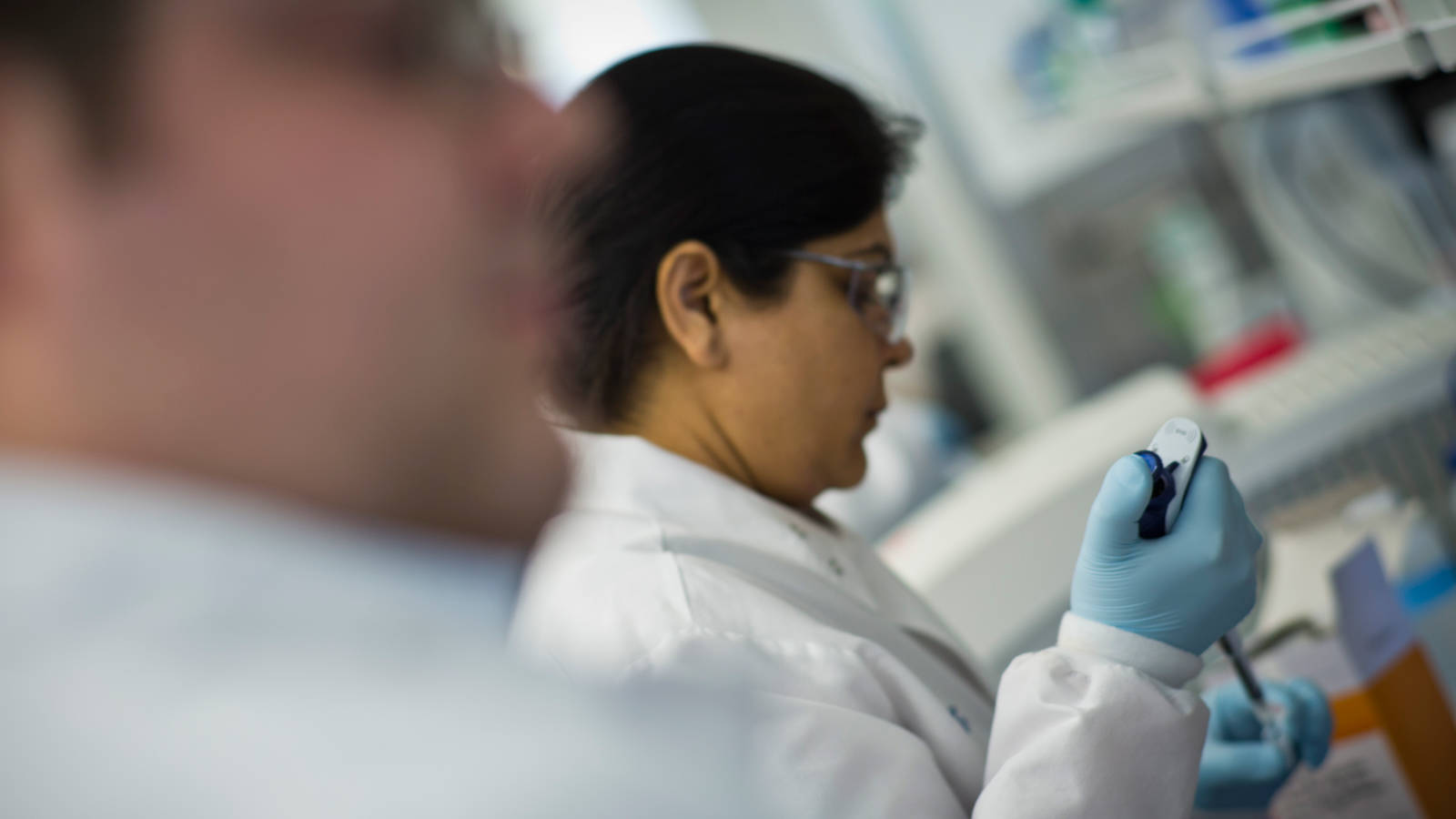
JAX receives $6.1M, 5-year NIH grant for laboratory mouse resource program.
For more than a century, the laboratory mouse has been the mainstay of biomedical research aimed at understanding human biology and disease. That value has only increased over time, thanks to highly sophisticated genome engineering technologies and the vast collection of genetic, physiological and functional data on the mouse that is available to the scientific community.
Recognizing the essential role of the laboratory mouse in biomedical research, the National Institutes of Health (NIH) have renewed funding for its Mouse Mutant Resource and Research Centers Mutant Mouse Resource and Research Center (MMRRC)The Mutant Mouse Resource and Research Center (MMRRC) distributes and cryopreserves scientifically valuable, genetically engineered mouse strains and mouse ES cell lines with potential value for the genetics and biomedical research community.(MMRRC) program, established in 2009 at The Jackson Laboratory (JAX) and other U.S. research institutions. The new grant will provide a total of $6,119,082 over five years to the JAX MMRRC.
JAX Senior Director for the Mouse Repository and In Vivo Pharmacology Cat Lutz, Ph.D.The primary research goals of the Lutz lab involve developing preclinical mouse models of neurodegeneration to test therapeutics and inform clinical trials.Cat Lutz, who with Associate Professor Laura Reinholdt, Ph.D.Dr. Reinholdt’s research focuses on comparative and functional mammalian genomics, reproductive development and stem cell biology. Laura Reinholdt is principal investigator of the JAX MMRRC, says, “Over the past decade, JAX scientists and staff have served together alongside our MMRRC colleagues at the University of Missouri, the University of North Carolina at Chapel Hill and the University of California, Davis. We have shared best practices, operating procedures and technical methods that have contributed significantly to the high quality of service we provide to the scientific community using mutant mice for research.”
The primary responsibility of the four regional Centers is to provide a reliable, readily accessible, quality-assured repository of mutant mouse strains to rapidly meet the needs of researchers across the globe. Over the next five years, the JAX MMRRC will select and acquire new mouse strains of exceptional value to the scientific community. Researchers can order these strains in the form of live mice or cryopreserved (frozen) germplasm, embryos or ES cell lines. JAX will also develop new mouse models to fill researchers’ specific requests and needs.
“JAX has supplied mice to the scientific community for nine decades,” Lutz says, “and is considered the ‘gold standard’ in mouse resources.” An integral part of this quality culture, she says, is the JAX commitment to operating under the highest quality control program to ensure genetic stability and to protect animal health.
“We look forward over the next five years to continuing work with our Center partners as we optimize the care, creation and characterization of mouse models of disease for the benefit of the research community,” Lutz says.